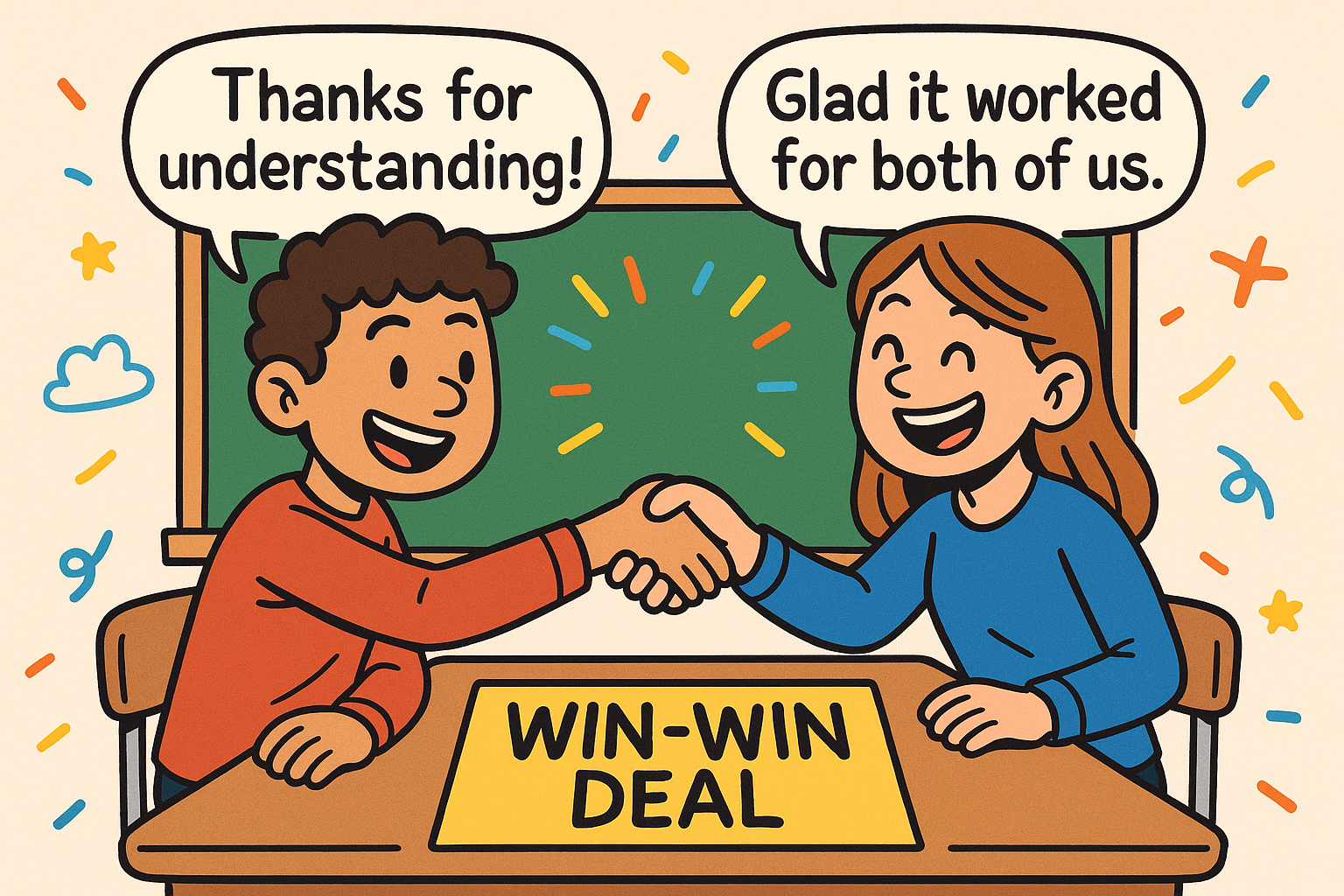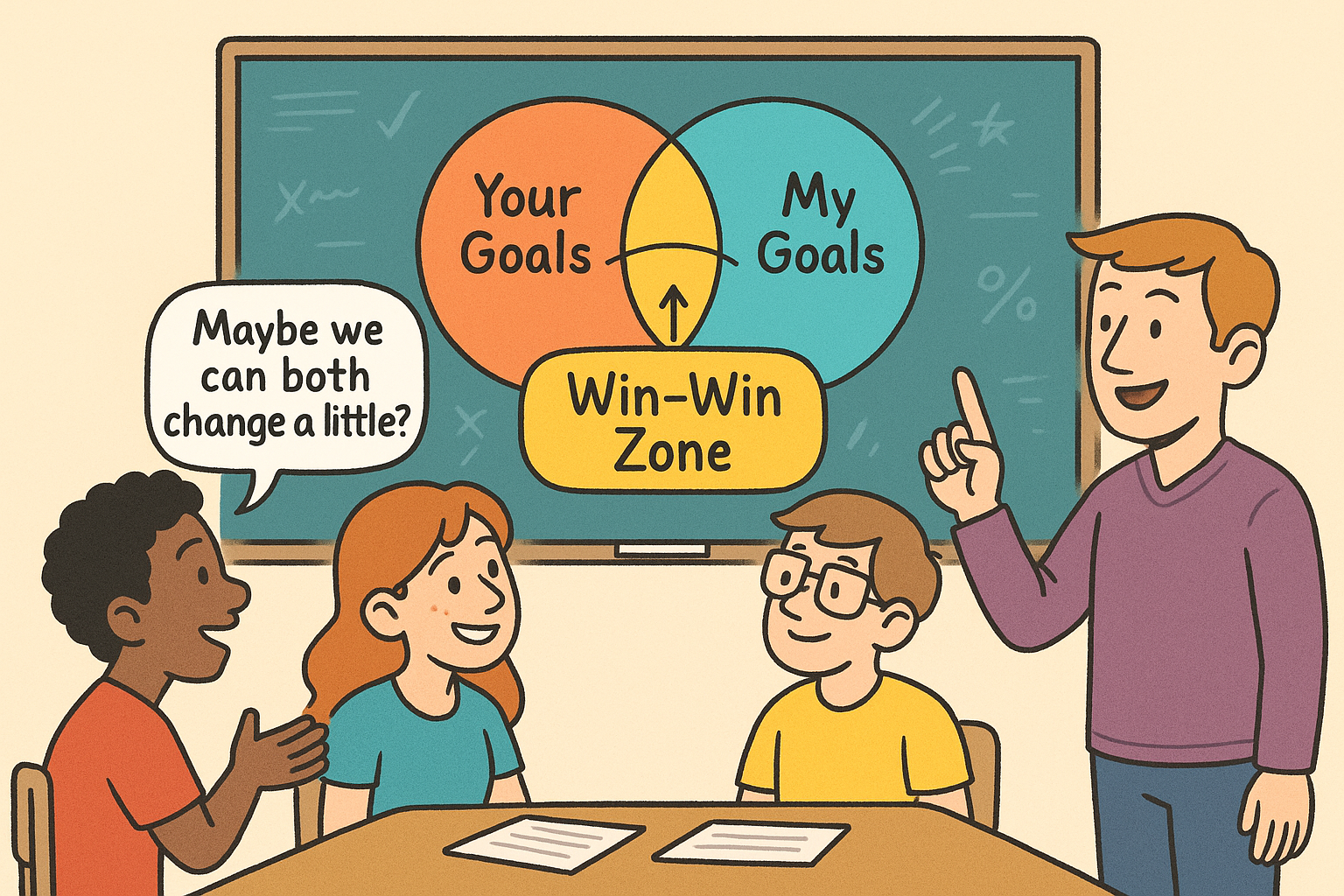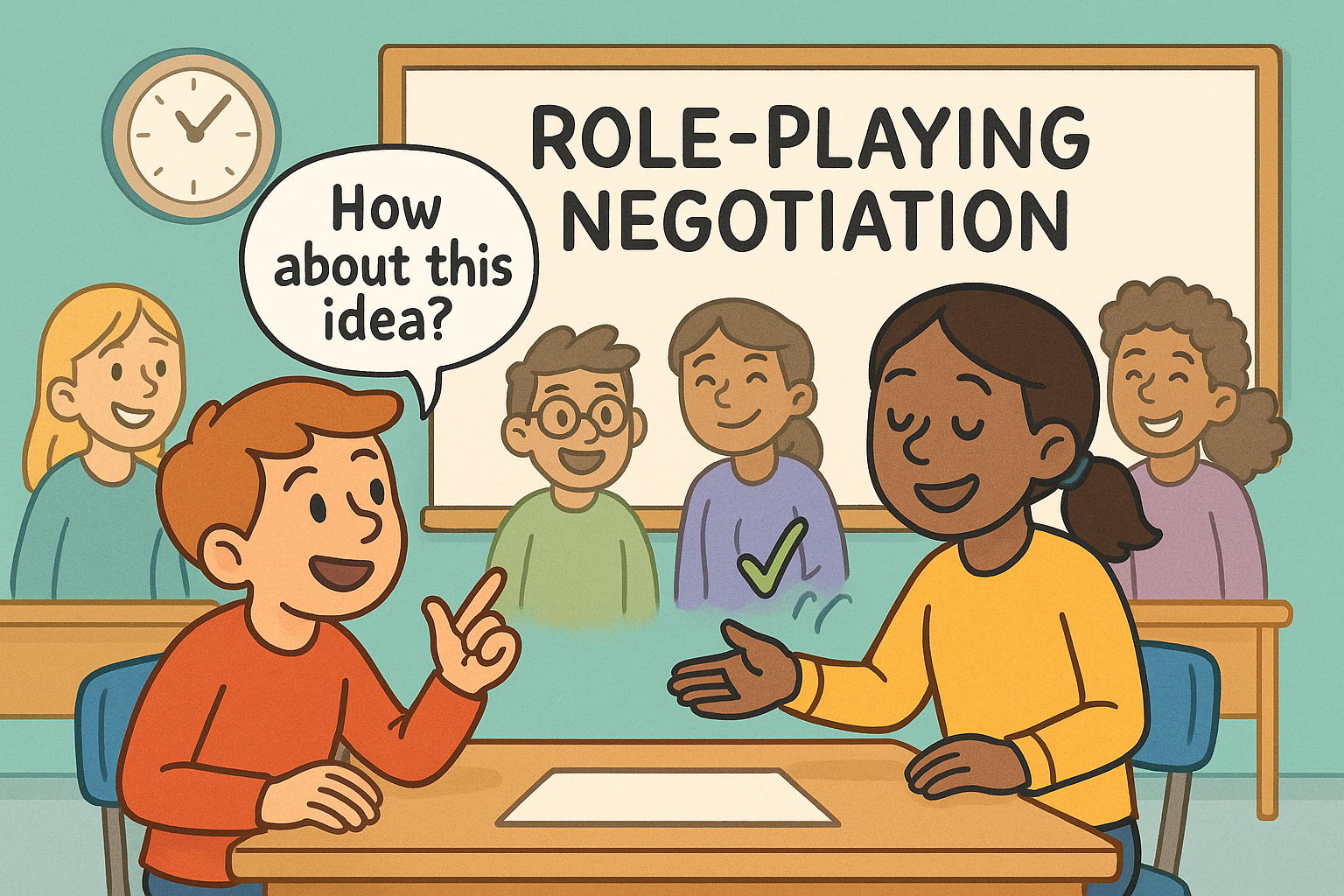🤝 Negotiation Basics
Negotiation isn’t about fighting — it’s about understanding what both sides want and finding the middle path.
You negotiate more than you think:
- When you ask for extra time on homework.
- When you choose where to eat with friends.
- Even when you trade chores at home.
It’s not a battle.
It’s a conversation with a goal:
“Let’s both win something that matters.”
🎯 The Goal of Negotiation
Most people think negotiation means one person wins.
In business and life, the best negotiators create win–win outcomes.
| Style | Focus | Result |
|---|---|---|
| Aggressive | Win at all costs | One side angry or silent |
| Passive | Avoid conflict | One side unhappy later |
| Collaborative | Find shared value | Both satisfied |
Real power comes from empathy + clarity, not pressure.

True negotiation means finding the win–win — both sides leave feeling understood, respected, and satisfied.
💬 Story: The Case of the School Fair Booth
Two students, Emma and Leo, both wanted the best spot for their booths.
Emma ran a snack stand. Leo had a poster game.
At first, they argued.
Then they talked:
- Emma: “I need power for my mini fridge.”
- Leo: “I need space so people can play.”
They realized that a corner spot with an outlet and open space worked for both.
They agreed — and both made record sales.
That’s negotiation: not louder voices, but better questions.
🧠 The 3-Step Negotiation Framework
Step 1 — Prepare Before You Talk
Ask yourself:
- What do I really want?
- What could I offer in return?
- What would be a fair deal for both?
Preparation is half the win.
Step 2 — Listen to Learn
Most people prepare arguments.
Smart negotiators prepare questions.
Try asking:
- “What’s most important to you?”
- “If I can do X, could you do Y?”
- “What would make this feel fair to both of us?”
💬 Listening = information = power.
Step 3 — Build the Bridge
When both sides share, find overlap:
- “We both want this project to finish on time.”
- “We both want the presentation to look great.”
Then suggest a solution around that common ground.
That’s how good deals are made.

The best negotiations happen in the Win–Win Zone — where both sides understand each other’s goals and find shared success.
🧩 The Language of Good Negotiators
The words you use change everything.
| Don’t Say | Try Saying Instead |
|---|---|
| “That’s not fair.” | “Can we find a middle point?” |
| “You’re wrong.” | “Let’s look at it another way.” |
| “No way.” | “What if we try this instead?” |
| “I need this.” | “Here’s what matters most to me.” |
Words shape tone — and tone shapes trust.
💬 Mini Practice
Think of a disagreement you had this month.
Now rewrite your sentences using “Try Saying Instead.”
Notice how the tone shifts from pushy to positive.
🎲 Role-Play Challenge
Grab a classmate and act out a simple negotiation:
| Scenario | You | Partner |
|---|---|---|
| You want to use the classroom projector | Presenter | Teacher |
| You both want the same role in a project | Student A | Student B |
| You’re dividing tasks for a school event | Organizer | Volunteer |
💬 Rule: each side must make one offer and one compromise.
Afterward, discuss what worked best — logic, empathy, or creativity?

Practicing negotiation builds confidence — when students role-play real situations, they learn to listen, adapt, and collaborate.
🧩 What Makes Great Negotiators?
- They stay calm. No emotion = clear thinking.
- They ask more questions than they answer.
- They look for the “why,” not the “what.”
- They know their limits — when to walk away.
Even saying “Let’s continue later” is better than forcing a rushed deal.
💬 Real-World Examples
- Steve Jobs — convinced record labels to sell songs for $0.99 by showing how it helped them, not just Apple.
- Oprah Winfrey — built business empires by listening first.
- Teen entrepreneurs — often negotiate prices, sponsors, and even team roles daily.
Every good deal begins with understanding value, not demanding it.
🧭 Try This at Home
Pick one small daily situation — like deciding what movie to watch or splitting chores.
Instead of arguing, use:
“Let’s find something that works for both.”
See how the tone changes.
That’s the essence of negotiation — building bridges, not walls.
💬 Remember:
The best negotiators don’t “win” alone — they make everyone walk away saying,
“That was fair. I’d work with them again.”
📝 Try this today
Notice one negotiation you take part in today — it could be about time, chores, or sharing something. Write what both sides wanted and how it ended.
Pick a friend or classmate and act out a small deal: selling a used item or planning an event. Switch roles and compare results.
List three things you value most in a deal (time, money, fairness, respect). Then list what others might value differently.
Lesson Progress
Module: acumen · +0% upon completion